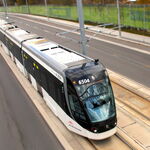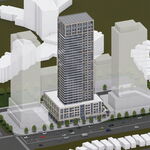T-Bor
Active Member
Great data! But the ratios of multi/sfh have dramatically changed since 2015 to 80% multi for the whole region and beyond. There has also been a huge increase in rail expansion that is about to begin operating with no road capacity increase.
I’m not saying that you are misguided but the economy/built environment have gone through a paradigm shift to reflect new global realities.
Thanks!
I was thinking of that point too before I posted it - but that assumes that everyone that lives in a 905 condo or townhouse, for example, is only seeing other people nearby. Picture the condos around VMC. Yes, it's dense. Is there a realistic expectation that most people there will be using transit to get around? Groceries? Kids school dropoffs? Weekends? A few will, sure, but nearly everything you want to do in York region requires a car.
Admittedly there may be more households that only need one car vs two, so the rate of car ownership may start to decrease among these new households




